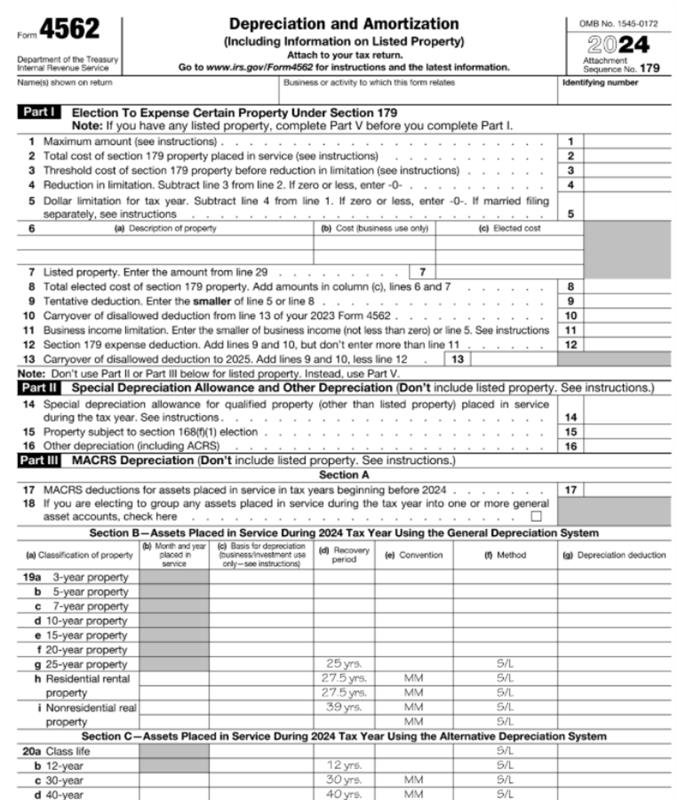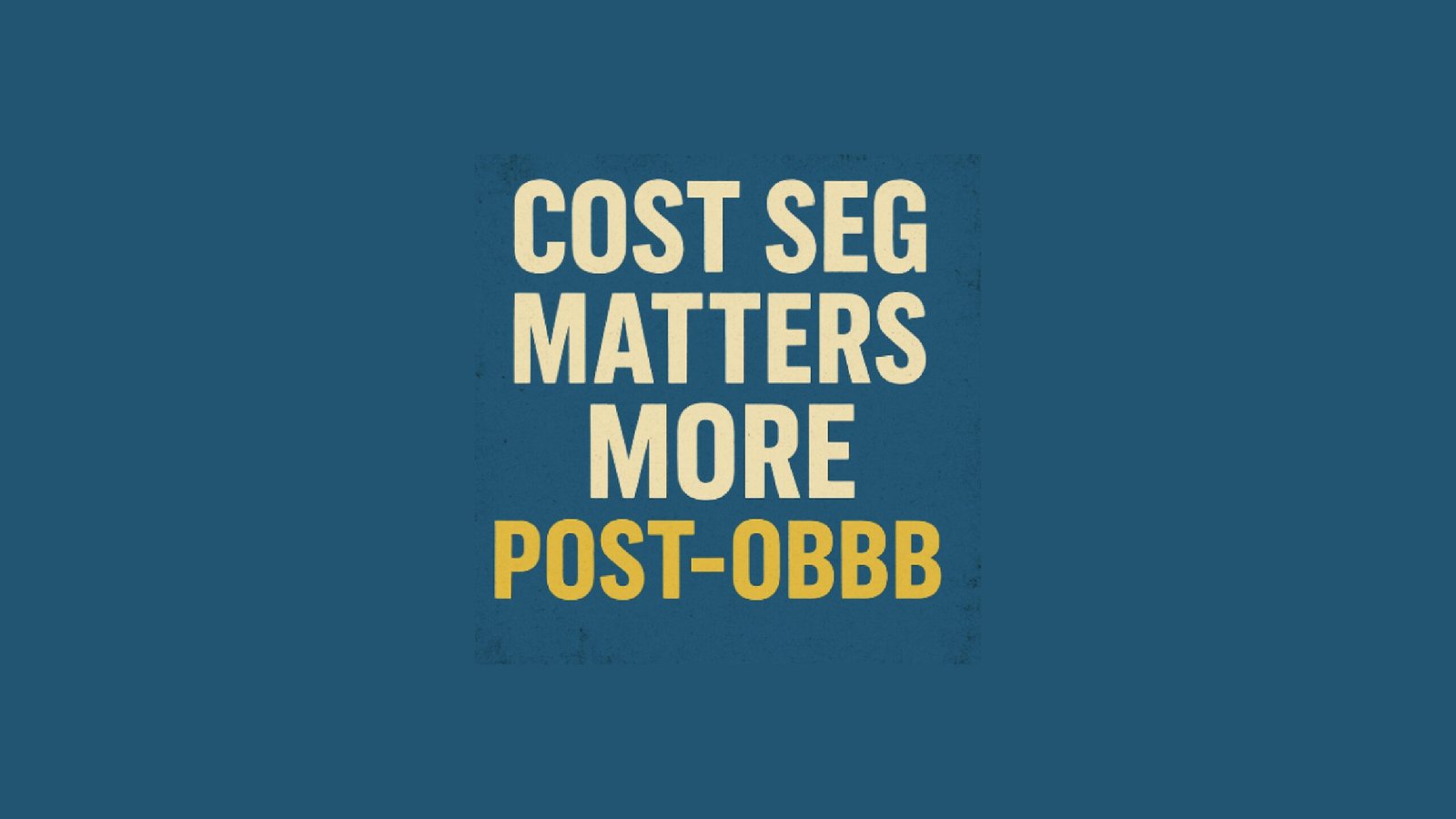Why Cost Seg Matters More Post‑OBBB
Real estate investors always look for ways to keep more cash in their pockets. Enter cost segregation and bonus depreciation two tools that, when combined, can supercharge your cash flow. With the One Big Beautiful Bill (OBBB), signed into law on July 4, 2025, these strategies have become even more powerful. The OBBB extends 100% bonus depreciation for certain properties through 2029, making now the perfect time to dive into cost-segregation study real estate strategies and 100 percent bonus depreciation real estate opportunities.
This blog breaks down how these tools work, why they matter, and how you can use them to boost returns on NNN property for sale or triple net (NNN) 1031 exchange investments.
Let’s get started.
What Is Cost Segregation and Why Does It Matter?
According to a report, a cost segregation study breaks down a property’s purchase price into parts that can be depreciated faster than the standard 27.5 years for residential or 39 years for commercial properties. Think of it like sorting your laundry: some items (like carpets or lighting) can “dry” faster meaning they depreciate over 5, 7, or 15 years. This speeds up your tax deductions, putting more money in your pocket today.
The OBBB makes this strategy even better by allowing 100 percent bonus depreciation real estate for assets with a tax life of 20 years or less, like those identified in a cost segregation study. According to a recent report, this provision can increase cash flow by 5-10% annually for investors who act quickly (Reuters, Jul 10, 2025). For single-tenant NNN investment properties, this is a game-changer, especially when paired with a triple net (NNN) 1031 exchange to defer capital gains taxes.
5-Step Workflow: From Engineer to Tax Savings
Using cost segregation and bonus depreciation isn’t complicated, but it requires a clear plan. Here’s a simple 5-step workflow to get you started:
- Engage a Qualified Engineer: Hire a professional who specializes in cost-segregation study real estate. They’ll visit your property, like those listed on 1031 Deal Hub’s Chicago 1031 exchange properties and identify components eligible for faster depreciation.
- Conduct the Study: The engineer analyzes your property, categorizing assets into buckets like personal property (5-7 years) or land improvements (15 years). This step is critical for bonus depreciation–eligible property.
- Review the Report: The engineer provides a detailed report showing how much of your property’s cost can be reclassified. For example, a $1M property might have $300,000 in assets eligible for 5-year depreciation.
- Work with Your CPA: Share the report with your tax advisor to ensure compliance with IRS rules, especially for 1031 exchange properties for sale. They’ll calculate your 100 percent bonus depreciation real estate deductions.
- File Form 4562: Your CPA submits IRS Form 4562 with your tax return, claiming the accelerated depreciation and bonus depreciation. This step locks in your savings.

This process works seamlessly for passive net-lease income properties, like those in Dallas or Phoenix, where low management and high tax benefits align.
Sample Payback Timeline
Here’s a detailed breakdown for a $1.5M purchase with $400K of accumulative cost segregation:
| Year | Deduction Breakdown | Tax Savings (@37%) |
| Year 1 | $400K bonus + $15K reg dep | $151K |
| Year 2 onward | Standard schedule (~$38K/yr) | $14K/year |
Without cost segregation, Year 1 deduction would be ~$38K—massively smaller.
By doing the calculations:
- Year 1 incremental savings: ~$113K
- Five-year cumulative uplift: ~$150–200K
This dramatically boosts cash flow and reinvestment potential.
Common Errors & How to Avoid Them
Avoid these common pitfalls to maintain compliance and maximize benefits:
- DIY or Template Reports
Non-engineered reports fail IRS scrutiny and increase audit risk. Always go with a qualified engineer.
- Poor Documentation
Weak reports lacking invoices, photos, or cost methodology often get rejected.
- Misclassified Assets
Avoid pushing structural items (like roofs or load-bearing fans) into 5‑year classes. Such moves invite IRS penalties.
- Ignoring State Rules
Some states (e.g., California, New York) don’t conform with federal bonus depreciation. Know your state laws.
- Skipping Form 3115
Even if past years were missed, you can still file a change don’t leave money on the table.
By sidestepping these roadblocks, you preserve your immediate deductions and stay audit-safe.
Turbo‑Charge with NNN Strategies
Pairing cost segregation and bonus depreciation with smart NNN deals amplifies your gain:
Why NNN Works
NNN property offers passive net-lease income, consistent cash flow, and asset stability plus great alignment with depreciation boosts.
Where to Invest
Consider premier NNN markets:
- Chicago – retail-heavy
- Phoenix – industrial & medical
- Dallas – logistics/retail
- Denver – mixed-use
- Houston – energy corridors
Combine with 1031
In a triple net (NNN) 1031 exchange, use safe-harbor 1031 timelines and replacement property 45-day rule to defer capital gains and boost wealth building. Look for DST 1031 listings under $1M for easier access.
Frequently Asked Questions
- What is a cost segregation study?
A cost segregation study identifies parts of a property that can be depreciated faster than the standard 27.5 or 39 years, like carpets or lighting, to boost tax deductions. - How does bonus depreciation work with the OBBB?
The OBBB allows 100% bonus depreciation for assets with a tax life of 20 years or less, like those identified in a cost segregation study, through 2029 (Reuters, Jul 10, 2025). - Can I do a cost segregation study on properties under $1M? Yes. In fact, many investors use cost seg on smaller commercial properties especially if paired with DST 1031 listings under $1M. The key is working with a provider who can scale the study appropriately to the asset size.
- How does bonus depreciation work with a 1031 exchange? While 1031 exchanges defer capital gains taxes, bonus depreciation–eligible property acquired as the replacement asset can provide new write-offs. This allows investors to defer old gains and deduct new depreciation maximizing both strategies.
- What if I’m investing passively in a NNN deal? Even in a passive net-lease income scenario, you can still benefit from cost segregation. Many single-tenant NNN investments include improvements (e.g., parking, HVAC, interior build-outs) that qualify for bonus depreciation.
Maximizing Returns with 1031 Deal Hub
The OBBB’s 100% bonus depreciation window (2025-2029) makes cost-segregation study real estate a must for investors. Whether you’re eyeing NNN property for sale in Jacksonville or DST 1031 listings under $1M in Fort Worth, combining cost segregation with a triple net (NNN) 1031 exchange maximizes your cash flow and defers taxes.
Ready for passive income? Visit https://1031dealhub.com/ to browse NNN 1031-eligible properties now.
DISCLAIMER
I am not a CPA, attorney, broker-dealer, or investment adviser. This content is for general education and must not be relied upon for tax, legal, or accounting advice. Always consult your licensed professional. Federal and state rules change frequently; info may become outdated. Circular 230 Notice: Nothing here is intended for, nor can it be used for, avoiding U.S. tax penalties.
Advertising Disclosure. Posts may reference services offered by AMC Real Estate Investment Services and affiliates, including 1031DealHub.
Forward-Looking Statements. Any opinions or projections are based on current data and may change without notice.





